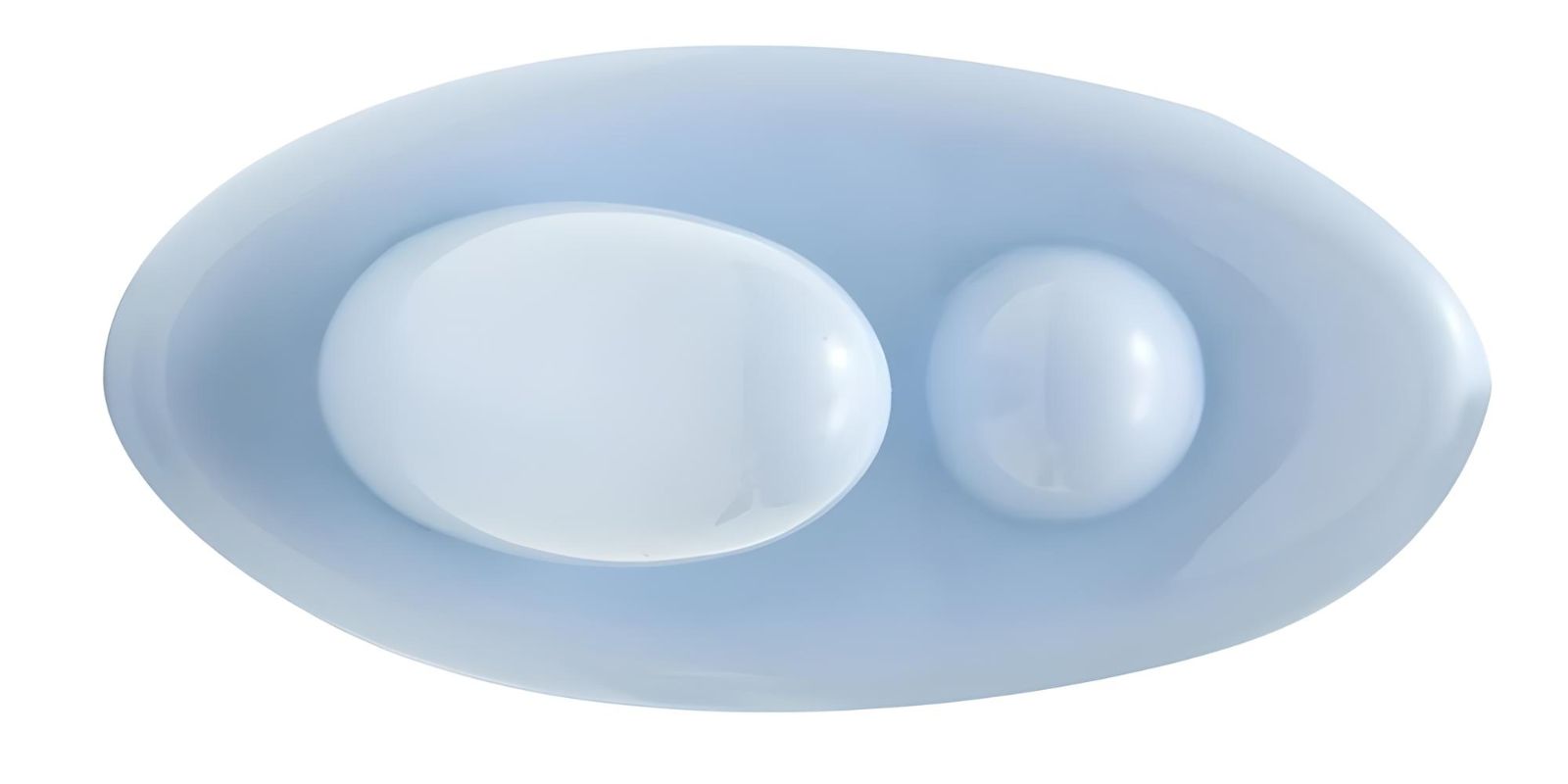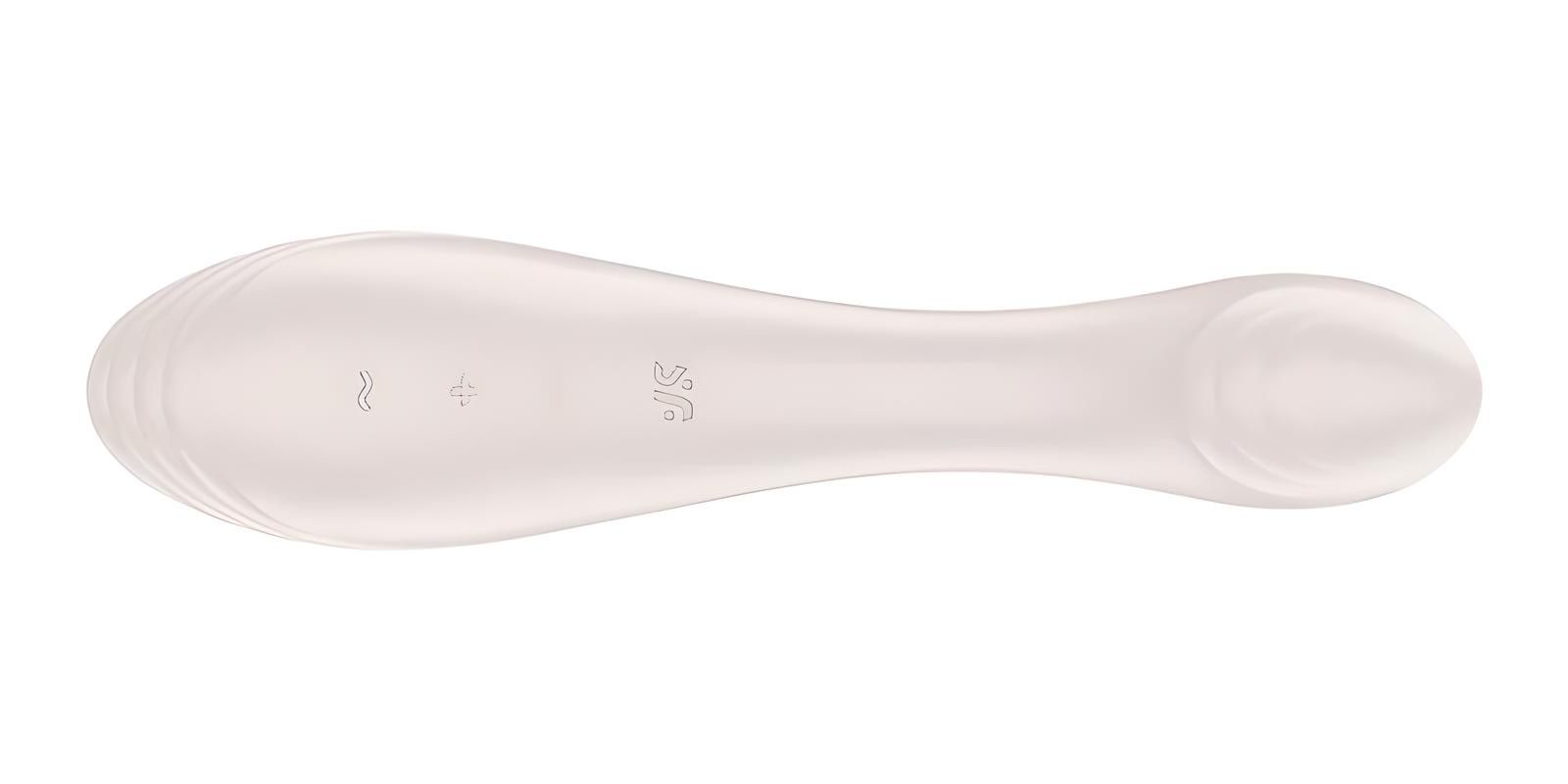Finding The G-Spot: What It Really Is and How It Can Feel Good
Quick Answer: What is the G-spot and how can it feel good?
The G-spot is part of the internal clitoral network on the vaginal front wall, a few centimetres in. Stimulate it with curved fingers or the Satisfyer G-Force for deep, pleasurable sensations. Explore slowly with lube, focusing on comfort, not pressure.
Few topics in sexual health get as much buzz or bring as many questions as the elusive G‑spot. Some call it a pleasure zone. Others aren’t even sure it exists. But the truth is, there’s more to it than myths or magic spots. Finding the G-spot is relatively simple, but nerves, inexperience and other factors can cause issues locating it. Understanding this part of your body can open up new ways to feel good, but only if the information is grounded, clear, and shame-free.
Let’s get one thing out of the way first—there’s no single “right” way to experience pleasure. For some, Finding The G-Spot leads to big sensations. For others, it doesn’t feel like much. That’s all completely normal. What matters most is comfort, curiosity, and a willingness to learn about what feels good for you. You’ll know once you’ve found it, perhaps even squirt. One thing is for sure, once you are done playing, you will definitely need to clean up after sex.
This guide breaks things down step-by-step with facts, not fads. You’ll learn what the G‑spot actually is, how to touch it, what to expect, and how to talk about it with a partner. You’ll even find a couple of sex toy suggestions that are built to help. All in a tone that respects every body—because pleasure should never come with pressure.
Table of Contents – Finding The G-Spot
- Is the G‑Spot Real?
- Where You Might Find It
- How to Stimulate It With Your Hands
- Pleasure, Orgasms and Squirting
- Talking About It Can Make It Better
- Common G‑Spot Myths Worth Letting Go Of
- Tried Two Toys? These Two Might Help
- Curious Questions, Honest Answers
- Pleasure Isn’t a Checklist—It’s Yours to Define
Is the G‑Spot Real?
Plenty of people have heard of the G‑spot. But whether it’s real or just a rumour has been debated for decades. The answer is a bit more complex than a simple yes or no. There’s no separate lump of tissue hiding deep inside the vagina. Instead, what we often call the G‑spot is part of a larger internal structure that includes the clitoris.
This means Finding The G-Spot is more about understanding your inner clitoral anatomy than hunting for a secret button. The internal clitoral network has legs that wrap around the vaginal canal. When stimulated through the front wall of the vagina, this area can create deep, rich pleasure—though not everyone feels the same way when it’s touched.
Science has slowly caught up. Earlier studies missed this internal structure due to limited imaging tools. But modern anatomy confirms that erectile tissue around the urethra and vaginal wall is linked to the clitoris. So yes, the sensation is real. But no, it’s not a single “spot.”
Just like every face is different, so is every body. For some, it’s a clear yes. For others, it barely registers. And both are completely normal.
Where You Might Find It
There’s no need for guesswork when it comes to finding where the G‑spot might be. It’s located on the front wall of the vagina, just a few centimetres in—about the length of your finger’s first two joints. This area is part of the internal clitoral network, not a separate body part.
The texture often feels slightly ridged or spongey compared to the smoothness around it. Some say it feels like the roof of your mouth, but softer. The best way to try is by gently inserting a finger and curling it toward the belly button. This is the motion many describe as “come here.”
For some people, Finding The G-Spot leads to sensations that feel different from external clitoral stimulation—deeper, more internal, sometimes emotional. For others, touching the area doesn’t feel particularly intense. Both experiences are valid.
Lubrication helps, especially if you’re trying with fingers. Go slow and don’t expect fireworks the first time. The area is sensitive for some, but it isn’t guaranteed to react in a dramatic way. Feeling curious is good—but there’s no pressure to “get it right.”
How to Stimulate It With Your Hands
When trying manual stimulation, there’s a simple method that many find helpful. Insert one or two well-lubricated fingers into the vagina and gently press upward toward the front wall. The aim isn’t to poke around, but to apply light, steady pressure using a curved motion—like beckoning someone forward with your fingertip.
Movement matters. A slow rhythm with consistent pressure often feels better than fast or erratic motions. Some people prefer gentle touch, while others enjoy firmer contact. The area can swell slightly when aroused, making it easier to notice during stimulation. Listening to your body’s cues helps more than any trick or technique.
Trying Finding The G-Spot by hand can take some time, especially if you’re also navigating nerves or self-consciousness. Breathing deeply and staying relaxed will support sensitivity. Being turned on first makes a real difference. The more aroused the body is, the more responsive this internal area tends to be.
There’s no gold medal for results. You don’t have to feel anything special for it to count. And if fingers feel awkward or tiring, there are other ways—including toys designed to mimic that curved pressure comfortably. More on that soon.
Pleasure, Orgasms and Squirting
The sensations that come from stimulating the G‑spot can feel completely different to those from the clitoris. Some people describe the feeling as deeper and more internal—less sharp, more rolling. It might build slowly, starting as a kind of pressure that eventually releases in a wave of pleasure. Or it might not lead to orgasm at all, and that’s perfectly okay.
There’s no single outcome when it comes to Finding The G-Spot. For some, it brings intense pleasure or full-body orgasms. For others, it may not create any strong reaction. That doesn’t mean something is wrong—it just reflects how bodies vary. What matters most is whether it feels good, not how intense it is or what happens next.
Squirting is another topic that often gets linked to this type of stimulation. Some people release fluid during G‑spot play, and it’s totally normal if that happens. The amount can vary, and it doesn’t always mean orgasm. The fluid comes from the Skene’s glands, which sit near the urethra, and it’s not the same as urine, even if it feels similar.
No one should feel pressure to squirt, climax, or react a certain way. If you feel nothing or don’t enjoy the sensation, that’s information too—and just as valid.
Talking About It Can Make It Better – Finding The G-Spot
Good sex doesn’t happen in silence. That goes double when you’re trying something new or focusing on a part of the body that can feel mysterious. Open conversation can be the key to relaxing, feeling safer, and actually enjoying the process. Talking beforehand helps you feel more in sync, especially if you’re not sure how your body will respond.
If you’re with a partner, start by sharing curiosity. You might say something like, “I’ve been reading about the G‑spot and I’m interested in seeing how it feels for me.” Keep it casual and light, and always frame it as something you’re trying—not something you expect to perform. Consent and comfort are always more important than any goal.
Finding The G-Spot with someone else can become an opportunity to learn about each other’s bodies. Encourage feedback—positive or neutral. Words like “a little softer,” “try slower,” or even “that’s not quite it” are all helpful. These small moments of clarity can turn a potentially awkward try into something shared and connecting.
Solo or partnered, communication helps drop the pressure. You don’t need to know all the answers. You just need space to feel what’s real for you.
Common G‑Spot Myths Worth Letting Go Of – Finding The G-Spot
The G‑spot is one of the most misunderstood parts of sexual anatomy. Over the years, it’s picked up a handful of myths that just don’t hold up. These ideas can create unrealistic pressure, confusion, and unnecessary self-doubt. Clearing them up makes room for a more relaxed and satisfying experience.
One big myth is that everyone has the same kind of response. The truth is that some people feel intense pleasure from this area, while others feel nothing. Both responses are completely valid. Finding The G-Spot isn’t about triggering a universal button—it’s about getting to know your own body better.
Another common myth is that G‑spot orgasms are “better” or more “real” than clitoral ones. That’s simply not true. Pleasure is personal, and no orgasm is better than another. It’s not a competition, and no type of climax holds more value than the one that feels right for you.
Lastly, some believe that if you haven’t felt it, something must be wrong. That can’t be further from the truth. Bodies vary wildly, and pleasure pathways aren’t the same for everyone. Letting go of these myths clears the way for genuine, shame-free experiences.
Tried Two Toys? These Two Might Help
Ohhh G G-Spot Stimulator
This toy is designed with a purpose—to target that curved spot along the front vaginal wall with focused, firm pressure. The Ohhh G G‑Spot Stimulator has a rigid body that allows you to apply consistent contact right where it counts, without hand strain. Its shape follows the natural angle often used in manual G‑spot stimulation, so it feels intuitive and controlled.
If you’ve been curious about Finding The G-Spot but fingers haven’t done the trick, this stimulator offers a helpful alternative. The handle makes it easier to adjust pressure and depth, which is especially useful for those who prefer hands-free play. You can check it out here:
Ohhh G G-Spot Stimulator.

Satisfyer G-Force
For those who want vibration and curved reach in one toy, the Satisfyer G-Force is a solid choice. It combines a firm, angled tip with multiple vibration settings designed to stimulate internally. The curved shaft helps guide the vibrations right to the upper front wall, supporting the kind of pressure some people find rewarding during G‑spot play.
Its sleek design makes it comfortable to insert, and the strong motor adds a new dimension to sensation. The Satisfyer G-Force is a great tool for solo use or partner play, especially if your hands tire easily. Here’s the link to learn more:
Satisfyer G-Force.

Curious Questions, Honest Answers
Can everyone feel something when touching the G‑spot?
No, and that’s completely normal. Some people feel a lot of sensation in that area, while others don’t notice anything special. Both responses are valid. Anatomy and sensitivity vary from person to person.
Is it part of the clitoris or something else?
It’s connected to the internal clitoral structure. The erectile tissue near the urethra and front vaginal wall is stimulated during G‑spot play. So, while it’s not a separate organ, it’s part of the larger pleasure network.
What if I try and nothing happens?
That’s okay too. Finding The G-Spot doesn’t guarantee fireworks for everyone. Sometimes it takes time, arousal, or a different approach. And sometimes, it just isn’t your thing. That’s perfectly fine.
Can I feel it more during certain times?
Yes. Some people report more sensitivity around ovulation or when they’re highly aroused. Hormones and blood flow can make a difference. It’s also easier to notice sensation when you’re relaxed and mentally present.
Is squirting pee?
No, although it comes from the same area near the urethra. The fluid released during squirting contains small traces of urine, but it also includes fluid from the Skene’s glands. It’s not the same as urination, and it’s entirely normal if it happens—or if it doesn’t.
Pleasure Isn’t a Checklist—It’s Yours to Define
No two bodies are the same, and the way we feel pleasure isn’t meant to follow a set script. The idea of the G‑spot has inspired plenty of curiosity, and that’s a good thing—but only if it comes with space for different outcomes. There’s no single way to experience this part of your anatomy, and no correct response to stimulation.
What matters most is how Finding The G-Spot fits into your own understanding of what feels good. That might mean new sensations, or it might simply mean learning that you enjoy other kinds of touch more. Both are equally valid. Sex and pleasure should be about connection—whether with yourself or with someone else—not ticking off achievements.
Keep in mind that your preferences can change over time. What doesn’t feel great today might feel completely different in another context. And even if it doesn’t, that’s not a failure. It’s just part of knowing your body better and respecting its signals.
Let go of pressure, hold on to curiosity, and give yourself permission to feel good without expectations. That’s where real satisfaction begins.
Cassandra Smith is a yoga instructor sharing tips on wellness, mental health, and intimacy—focusing on self-awareness, balance, and daily mind-body care.



Leave a Reply